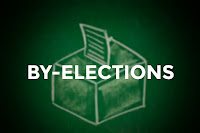When organizations introduce
online voting or make the switch to an online voting service, their voting members naturally voice their concerns about the change. These concerns stem from the need to have accessible, accurate, and secure voting processes for every voter. For those organizing the election, reliable results are crucial to maintaining confidence in the organization's governance. When weighing your options for voting systems, you may encounter the following questions.
Is Online Voting Easy to Use?
If your voting members aren't tech savvy, this may be a significant concern, but a needless one. Voters will get an email containing a link for the ballot. If your voters can receive and reply to email, they can use our online voting service.
Is Online Voting Anonymous?
Organizations that are used to secret ballots should know that emails are never used to violate the anonymity of the ballot box. If voters are having trouble accessing, completing, or submitting their ballot, OpaVote can address these concerns without ever needing to ask about their ballot choices. Managers have no way to associate specific ballot choices with a specific voter.
Is Online Voting Secure?
On the Internet, no one knows you're a dog. But our security measures can prevent an unauthorized user from gaining access to your election or a voter from submitting a duplicate ballot. Once you are done with your election and remove it from OpaVote, we delete the information we collected to maintain and secure your privacy. Emails are not used for any purpose outside the election so your voters need not worry about being bombarded with spam for using our online voting service.
Is Online Voting Affordable?
For the price of a latte, you can run an election for up to 100 voters for two weeks. Small elections lasting a week with up to 25 voters are free. Our pricing schedule offers plans that will accommodate up to 10,000 voters for an election cycle lasting nearly two years, leaving you with enough money and plenty of time to plan a victory party.





















